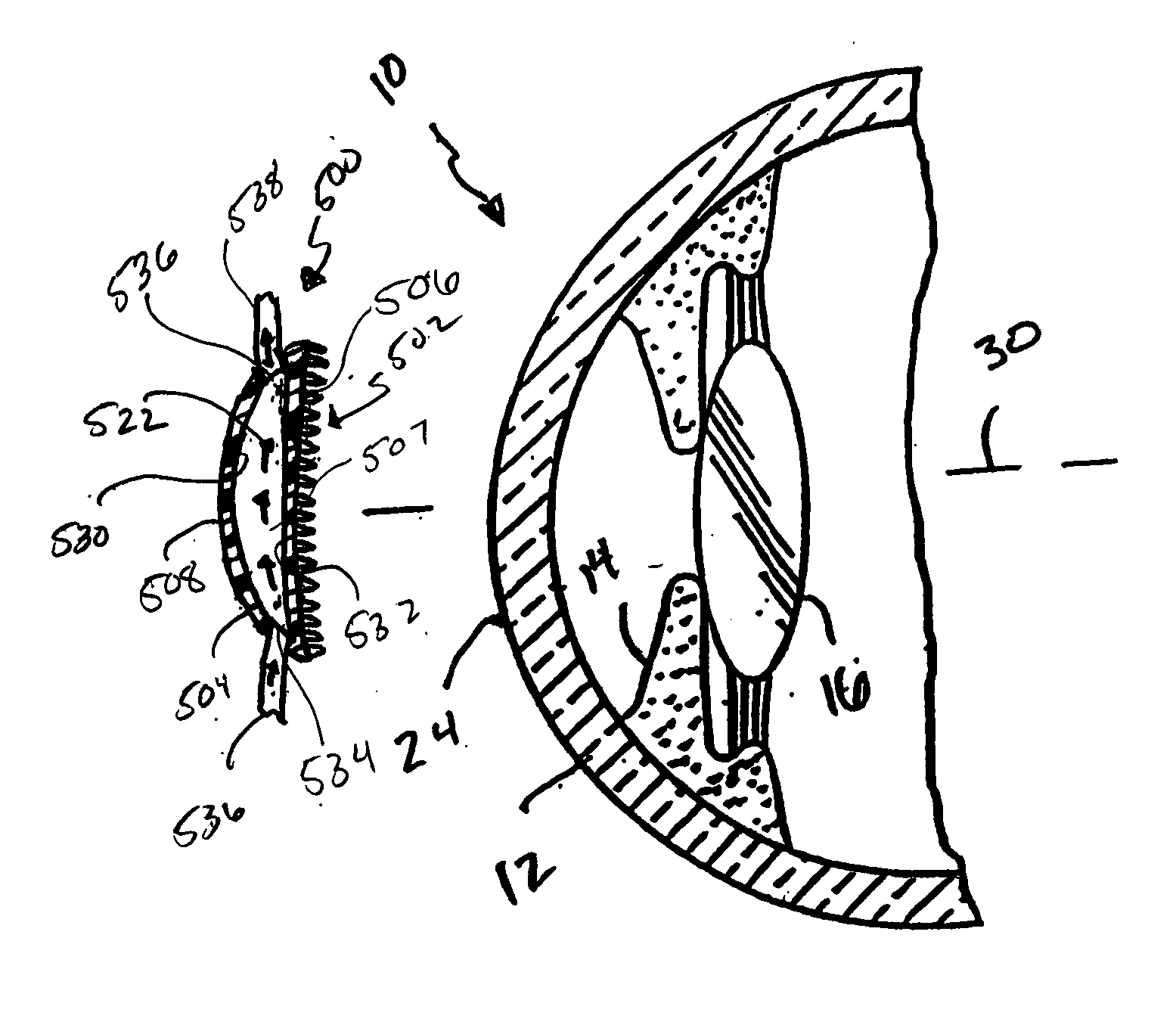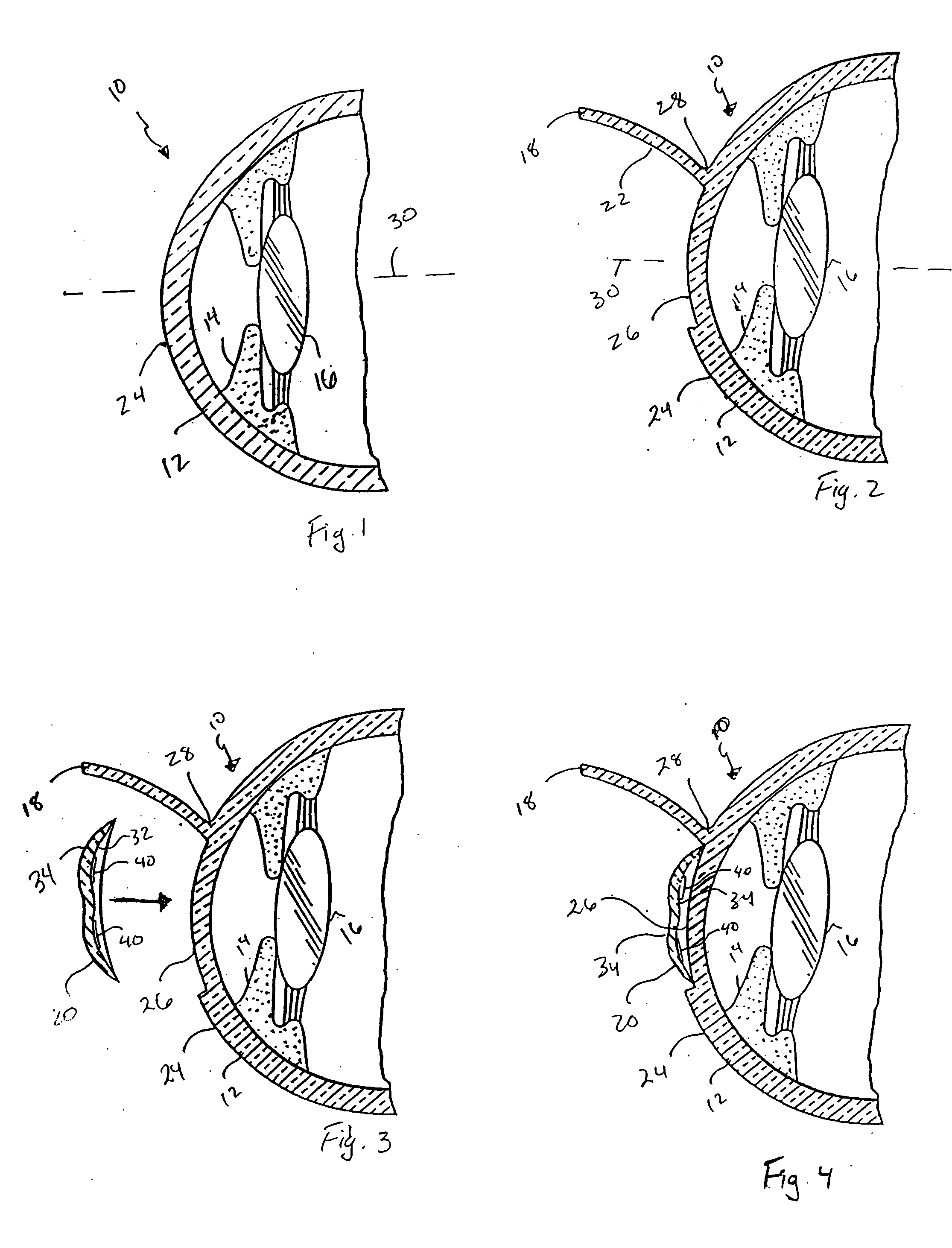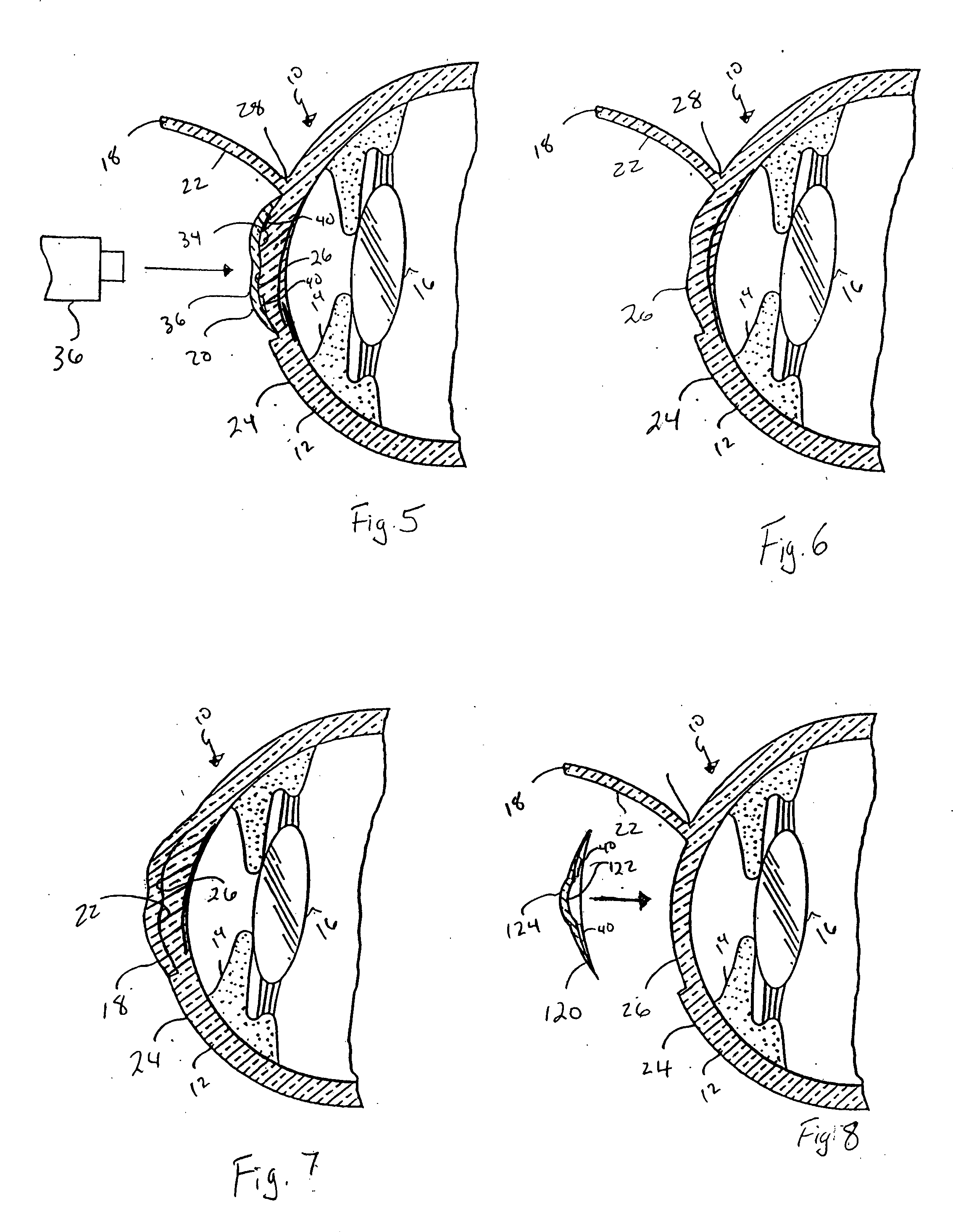Method and apparatus for reshaping the cornea by controlled thermal delivery
a controlled thermal delivery and corneal technology, applied in the field of corneal refractive error correction, can solve the problems of ametropia, inability of the lens and cornea to focus the far point correctly, and inability of the astigmatic eye to sharply focus images on the retina
- Summary
- Abstract
- Description
- Claims
- Application Information
AI Technical Summary
Benefits of technology
Problems solved by technology
Method used
Image
Examples
Embodiment Construction
[0056]FIG. 1 is a side elevational view in cross section taken through the center of an eye 10, which includes a cornea 12, a pupil 14 and a lens 16. If the cornea 12 and lens 16 do not cooperatively focus light correctly on the retina (not shown) of the eye to thus provide adequate vision, the curvature of the cornea can be modified to correct the refractive power of the cornea and thus correct the manner in which the light is focused with respect to the retina.
[0057] As seen in FIGS. 1-7, the refractive properties of the eye can be modified or altered by forming a flap 18 in the surface 12 of the cornea, preferably by placing a reshaping device 20 having a predetermined shape on the surface 12 of the cornea, heating the reshaping device and in turn heating the surface of the cornea. However, it is noted that the cornea can be heated by any means suitable, such as directly by a laser or chemically or any other method that would allow heating the cornea to the proper temperature. H...
PUM
 Login to View More
Login to View More Abstract
Description
Claims
Application Information
 Login to View More
Login to View More - R&D
- Intellectual Property
- Life Sciences
- Materials
- Tech Scout
- Unparalleled Data Quality
- Higher Quality Content
- 60% Fewer Hallucinations
Browse by: Latest US Patents, China's latest patents, Technical Efficacy Thesaurus, Application Domain, Technology Topic, Popular Technical Reports.
© 2025 PatSnap. All rights reserved.Legal|Privacy policy|Modern Slavery Act Transparency Statement|Sitemap|About US| Contact US: help@patsnap.com



